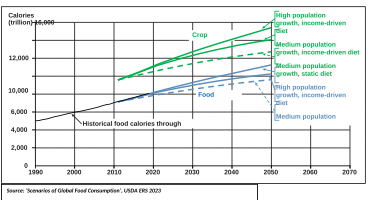Greenhouse Gas Emissions and Commodity Trading
- Satoshi Systems

- Jan 25, 2021
- 3 min read
Climate change and reduction of greenhouse gas emissions are two of the pressing issues of our time. On a policy level, internationally as well as nationally, climate change mitigation goals and strategies have been implemented. The United Nations’ Sustainable Development Goal 13 “Climate Action” and the related SDG 7 “Affordable Clean Energy” aim in this direction. The European Green Deal is an effort to make Europe the first climate-neutral continent. The United Kingdom has a net zero target for 2050. Emissions trading schemes in both Europe and the U.S. have been set up but there still are a range of issues.

Source: Pexels, Chris LeBoutillier
Not only on a policy level, but also among the general population and the end consumers, climate change and greenhouse gas emissions are increasingly prevalent topics. Consumers are becoming more and more aware of the issue and take personal initiative. Climate protests and “Fridays for Future” are an expression of the concerns of the younger generation especially.

Source: Pexels, Saph Photography
The private sector is acting as well. Companies take voluntary action and enact measures. Recently, on the initiative of the Center for Climate and Energy Solutions, 46 leading U.S. companies asked the President-elect and new Congress to work on climate solutions, power, automotive, aviation, tech, finance, manufacturing, oil and gas, mining, food, and retail sectors.
In the commodity trading area, big players are taking measures as well. The commodities trader Trafigura aims to cut carbon dioxide emissions caused by its operations by at least 30 per cent over the next three years. Glencore pledged to reduce its greenhouse gas emissions to net zero by 2050. Olam Coffee has set the goal to reduce the emissions of its global coffee footprint by 15 percent by 2025.
A big issue is the question of responsibility for the emissions generated. The most widely used international accounting tool Greenhouse Gas (GHG) Protocol categorises emissions into three scopes. Direct emissions, such as emissions from company cars fall under scope 1. Scope 2 emissions are indirect emissions from the generation of purchased electricity, heating and cooling. Scope 3 includes all other indirect emissions that occur in a company’s value chain such as purchased services or emissions caused through waste disposal.
The researchers Dr Jakob, Dr Ward and Dr Steckel elaborate in their guest post in the Carbon Brief that assigning responsibility for emissions is especially tricky for internationally traded goods. The common practice of allocating emissions to the country where they are released falls short. Focusing on producers or consumers only is not an accurate measure either. The authors therefore suggest a scheme that divides trade-related emissions among trade partners in proportion to the economic benefits they derive from these emissions.
Paul Bloxham, Chief Economist of HSBC shows that carbon pricing can be a way to reduce the carbon footprint of the commodity sector. Currently, only 20 percent of the greenhouse gas emissions are covered by carbon pricing. Meanwhile, there is a search for alternative measures: The European Union is considering a carbon border tax. This might pressure commodity producers to disclose their carbon footprint as well as impact them financially, Bloxham concludes.
According to the Financial Times, carbon labelling might be on the rise as well. It would enable customers to compare the climate credentials of products and companies. The Swedish oat drink company Oatly started using carbon labels two years ago. Unilever’s aim is to include them on its products as well and Nestlé is also contemplating carbon labelling. This would lead to more awareness and transparency and enable consumers to calculate their own comprehensive carbon footprint.
#climatechange #carbonemissions #commodities #commoditytrading #emissions #GHG #trade #CO2 #carbonfootprint #carbonlabelling
This is the first in a series of articles that explores the relation between commodity trading and greenhouse gas emissions.















Comments